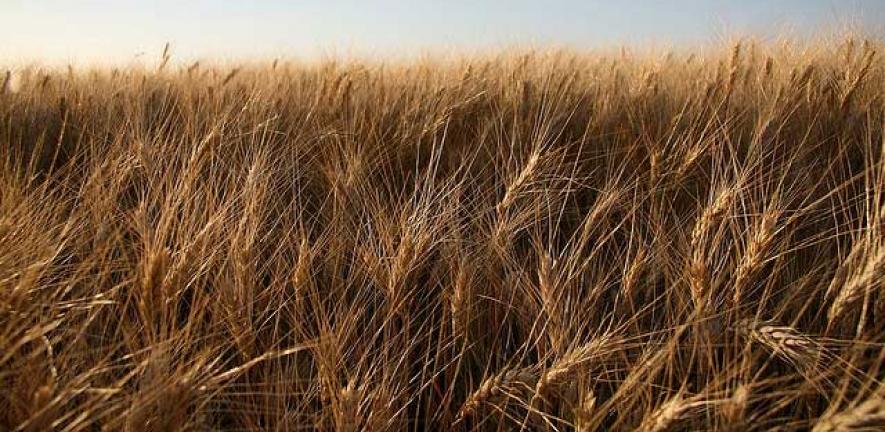
The Corn Returns – market data from the 19th century and beyond – represent a valuable resource for economic historians looking at the emergence of modern agricultural markets. A project to make these records digitally available will help solve some of the big questions about the economics of the age.
The Corn Returns – market data from the 19th century and beyond – represent a valuable resource for economic historians looking at the emergence of modern agricultural markets. A project to make these records digitally available will help solve some of the big questions about the economics of the age.
Much of 19th century political economy rested on contemporaries’ interpretations of this data, which was as ubiquitous for them as stock market prices are for us today.
Dr D'Maris Coffman
Two hundred years ago the price of British-grown grain – a commodity vital to the baking of bread and the brewing of beer, two items representing household staples, particularly for the poor and working classes - reached an all-time high.
We know this because, just as today’s media reports on the movements of the stock market, listing prices and trading volumes, so too did newspapers of the late 18th and early 19th century report on agricultural markets. Known as the Corn Returns, these reports set out the volume and average price of the main corns (wheat, barley, rye, oats, beans and peas) sold in a given week.
The inflated price of wheat in Britain in 1812 (50 per cent more than average and twice what it had been a decade before) was mainly the result of Napoleon’s Continental Blockade. In 1806, frustrated by his inability to invade Britain or overcome the formidable Royal Navy, Napoleon Bonaparte issued legislation, known as the Berlin Decree, which forbade France and her allies from trading with the British. To enforce the blockade, the French navy policed the English Channel.
The Berlin Decree was Napoleon's attempt to starve Britain of vital supplies. By the end of the 18th century, Britain’s imports of foodstuffs outstripped exports by ten-to-one. The blockade resulted in a tit-for-tat stand-off in which Britain retaliated by banning imports from France and her allies. What resulted was a trade war, which ended when Napoleon fell in April 1814. In many ways this was characteristic of trade spats ever since – including the so-called Cod War.
The data on Corn Returns, which were published in The London Gazette from 1770 onwards, represent an unparalleled historical resource, which promises to shine a light on the role of agriculture and agricultural markets in the British Industrial Revolution.
Now a project at Cambridge University’s Centre for Financial History at Newnham College (http://www.centreforfinancialhistory.org), sponsored by the Institute for New Economic Thinking (http://ineteconomics.org), is under way to digitize the Corn Returns and to make the data available to researchers the world over in the form of The Corn Returns Online (http://www.cornreturnsonline.org).
“The Corn Returns Online (1770-1865) begins with the publication of returns in The London Gazette, but the practice of reporting returns dates from the reign of James II,” said Dr D'Maris Coffman, who is directing the project. “As early as 1685 the state appointed inspectors to report the market prices of major agricultural commodities in the English maritime districts. The purpose was to enforce, and adjust, the custom duties on imported grains and bounties on grain exports.”
Both Crown and Parliament used this market information to direct Treasury policy and to ensure that bounties on the export of corn were paid. Although the bounties themselves made up a small part of the revenue, understanding grain markets was also essential to the administration of excise taxation, which represented about half of the total revenue in the early 18th century. Of that, the excise on beer and ale formed the largest part, and the brewing industry, in turn, consumed between a quarter and a third of the grain grown in Britain.
From 1770 onwards, inspectors were required to supply weekly quantities and prices for specified coastal and inland market centres - including Newcastle, Bristol and Plymouth as well as London - and eventually covered 290 markets. The average weekly prices were published in the London Gazette and after 1820 the published returns also included the quantities traded.
The Corn Returns played a role in the famous debate between David Ricardo and Thomas Malthus on whether or not Britain should remain protectionist after the end of the Napoleonic Wars. In advancing his argument about the “comparative advantage of nations,” David Ricardo employed a corn-ratio theory (sometimes called a corn model), which was in itself an extension of the analysis that Adam Smith made of corn markets in The Wealth of Nations.
According to Dr D’Maris Coffman, the director of the Centre for Financial History, this project has the ability to provide a clear picture of the role the infamous Corn Laws played in either fostering or retarding the growth of British industry.
This question has also been raised by Cambridge’s own Professor Ha-Joon Chang who argues controversially that British industry benefited from protectionist policies for the agricultural sector in the early 19th century. Dr Coffman explained: “Whether or not the data ultimately supports Professor Chang’s conclusions, he is correct that the Corn Laws were not just about protecting the interests of the gentry, but were also about state policy in a much wider sense.”
The Corn Returns had a wider social role as well. They provided an unbroken time series of the prices of standardised commodities (bushels or quarters) and a basis by which newspaper correspondents and their readers could track movements, estimate their land rents, and speculate in grains. Dr Coffman commented: “It is no exaggeration to say that much of 19th century political economy rested on contemporaries’ interpretations of this data, which was as ubiquitous for them as stock market prices are for us today.”
The Corn Returns, which amount to more than 6 million data points, represent the 19th century equivalent of today’s Big Data – a term used to describe the number-crunching power of computing and information technology to gather and analyse the huge quantity of data generated by market participants and by the modern state.
Dr Coffman said: “Our project is by no means the first attempt to make use of this incredible resource. Dr Lucy Adrian, an emerita fellow in Geography at Newnham College, Cambridge, attempted something similar in the 1970s, but the computing resources were not there. My team consists of a statistician, Dr Louise Pryor, and a trade economist, Dr Yuning Gao. I’m delighted we’ve been able to advance Lucy’s work and we hope to take it to completion.”
Modern computers give Cambridge researchers the tools they need to analyse the Corn Returns. The data they extract will answer important questions about the nature of agricultural markets in Britain, the world’s first industrialising economy. The Corn Laws were a hotly debated topic for 20 years; one side argued they were essential to protecting British agriculture while the other argued that they represented an unjustified tax on manufacturers. “Data extracted from the Corn Returns, and analysed using modern econometrics, will tell us which side was right,” said Dr Coffman.
The world needs food – and its need for food is ever-expanding. Many of the issues debated, and the economic scenarios played out, in the mid-19th century have parallels today as developing countries enter global markets with agricultural products vulnerable to the trio of climate change, governmental policy, and speculation.
“At the Centre for Financial History, we are pleased and proud to offer an historical database that will allow us to understand these challenges for the 19th century, hopefully with lessons for today,” Dr Coffman said.
This work is licensed under a Creative Commons Licence. If you use this content on your site please link back to this page.





